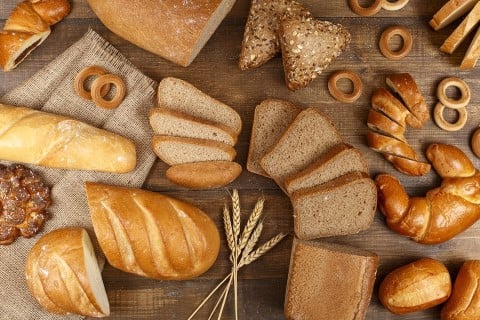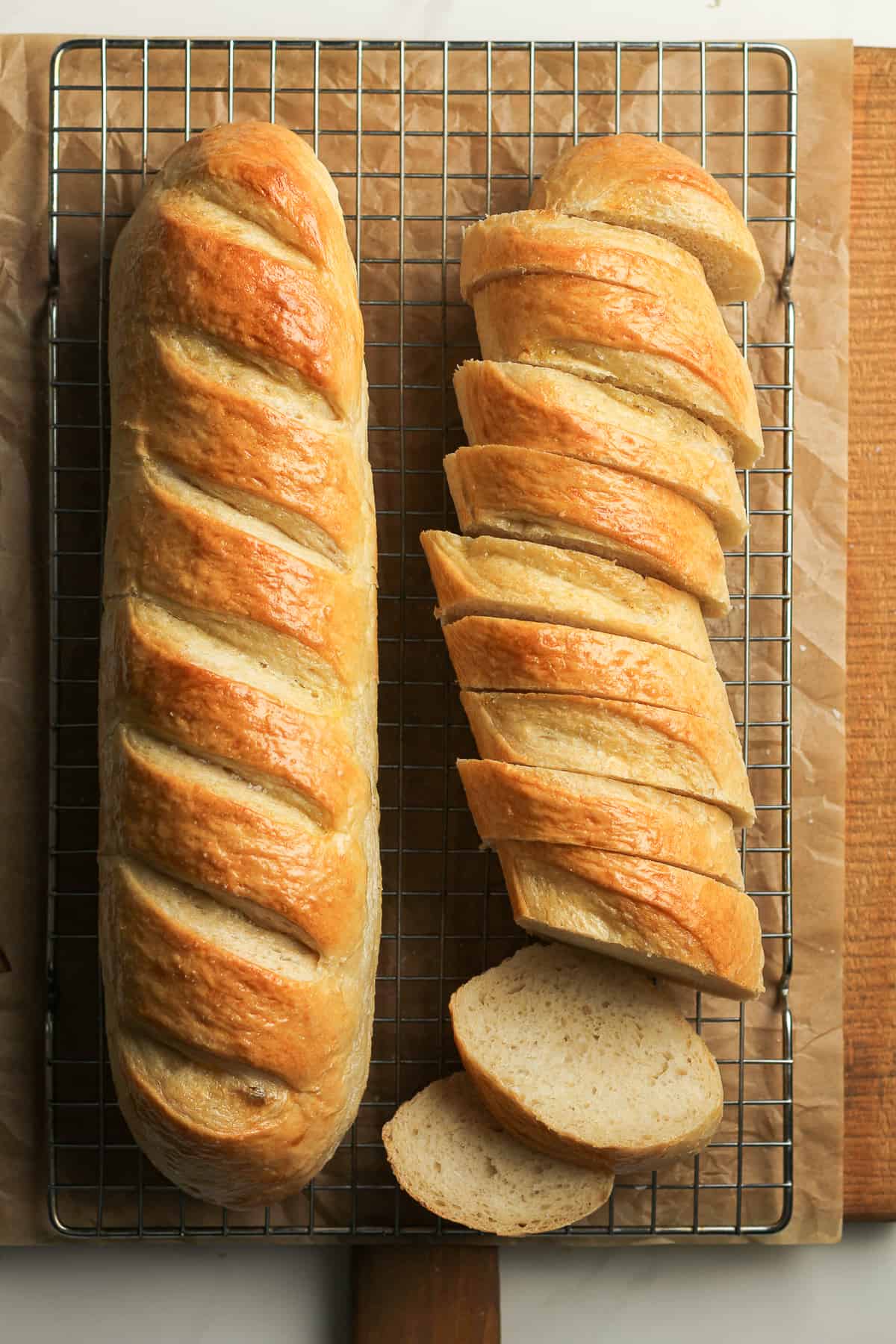The History of Bread & Homemade Bread Recipe
83

The history of bread is a rich and fascinating journey that spans thousands of years. Here's a concise overview:
The Early Beginnings:
- Prehistoric Period:The origins of bread can be traced back to prehistoric times when early humans likely consumed grains in a raw or partially cooked form.
- The accidental discovery of fermented dough might have occurred when grains mixed with water were left exposed to the elements, leading to a primitive form of leavening.

Ancient Civilizations:
- Egypt (circa 3000 BCE):
- The Egyptians are credited with refining bread-making techniques. They discovered the process of fermentation, which involves capturing wild yeast to leaven the dough.
- Bread became a staple in the Egyptian diet, and various types of bread were made, from simple flatbreads to more elaborate leavened loaves.
- Greece and Rome (circa 600 BCE - 400 CE):
- The Greeks and Romans adopted and adapted Egyptian techniques, further advancing the art of bread-making.
- Public bakeries emerged in ancient Rome, providing a wide variety of bread for the population.

Middle Ages:
- Byzantine Empire (circa 330 - 1453 CE):
- The Byzantines continued the traditions of the Romans, producing various types of bread, including sweetened and spiced varieties.
- The use of mills for grinding flour became more widespread during this period.
- Medieval Europe (circa 500 - 1500 CE):
- Bread remained a crucial part of the medieval European diet, with various grains such as wheat, barley, and rye being used for different types of bread.
- The manorial system included communal ovens for baking bread, and peasants often paid their lords in kind with a portion of their bread production.
:max_bytes(150000):strip_icc()/Perfect-Sandwich-Bread-FT-RECIPE0723-dace53e15a304942acbc880b0ae34f5a.jpg)
Renaissance to Industrial Revolution:
- Renaissance (14th - 17th centuries):
- Advances in milling technology, such as the watermill and windmill, improved flour production.
- The use of white flour became more common among the wealthy, while the lower classes continued to rely on whole grains.
- Industrial Revolution (18th - 19th centuries):
- The industrialization of bread-making began with the invention of the steam-powered mill, leading to increased production and the availability of cheaper bread.
- Commercial yeast production also started during this period.

20th Century to Present:
- Mass Production and Innovation:
- The 20th century saw the rise of industrialized bakeries, producing sliced bread, which became a symbol of convenience.
- Advances in technology led to the development of new types of bread, including whole-grain varieties and artisanal bread.
- Health Consciousness (Late 20th century - Present):
- With a growing focus on health and nutrition, there has been a resurgence of interest in traditional and artisanal bread-making methods.
- Specialty and craft bakeries have gained popularity, offering a diverse range of bread choices.
:max_bytes(150000):strip_icc()/__opt__aboutcom__coeus__resources__content_migration__serious_eats__seriouseats.com__recipes__images__2014__08__20140810-workhorse-bread-vicky-wasik-3-3a86ee51da2e4a7b8239ceb62d8d8d17.jpg)
The history of bread is a testament to human innovation and adaptation, with this simple staple evolving over the centuries to become a global culinary phenomenon. From the flatbreads of ancient civilizations to the artisanal loaves of today, bread continues to hold a special place in the hearts and diets of people worldwide.

Homemade Bread Recipe:
Ingredients:
- 4 cups all-purpose flour
- 1 tablespoon sugar
- 1 tablespoon salt
- 1 packet (2 1/4 teaspoons) active dry yeast
- 1 1/2 cups warm water (about 110°F or 43°C)
- 2 tablespoons olive oil (optional)
Instructions:
- Activate the Yeast:
- In a bowl, combine the warm water and sugar. Stir until the sugar dissolves.
- Sprinkle the yeast over the water and let it sit for about 5-10 minutes until it becomes frothy. This indicates that the yeast is activated.
- Mix Dry Ingredients:
- In a large mixing bowl, combine the flour and salt.
- Combine Wet and Dry Ingredients:
- Make a well in the center of the flour mixture and pour in the activated yeast mixture.
- Optionally, add the olive oil for added richness.
- Knead the Dough:
- Mix the ingredients until a dough forms.
- Turn the dough onto a floured surface and knead for about 8-10 minutes, or until the dough becomes smooth and elastic.
- First Rise:
- Place the dough in a lightly oiled bowl, cover it with a clean kitchen towel, and let it rise in a warm place for about 1-1.5 hours, or until it has doubled in size.
- Punch Down and Shape:
- Once the dough has risen, punch it down to release the air.
- Turn it out onto a floured surface and shape it into a loaf.
- Second Rise:
- Place the shaped dough into a greased loaf pan.
- Cover it with a towel and let it rise again for about 30-45 minutes.
- Preheat Oven:
- Preheat your oven to 375°F (190°C) during the second rise.
- Bake:
- Once the dough has risen in the pan, bake it in the preheated oven for approximately 25-30 minutes or until the top is golden brown, and the loaf sounds hollow when tapped.
- Cool and Enjoy:
- Allow the bread to cool in the pan for a few minutes, then transfer it to a wire rack to cool completely before slicing.
Feel free to experiment with different flours, add seeds, or vary the ratio of whole wheat to all-purpose flour to customize the bread to your liking. Enjoy your freshly baked homemade bread!
I recommend you to watch some of delicious pizza recipes that I share below;
Homemade Bread Recipe;
No-Knead Bread Recipe;
Homemade Sandwich Bread Recipe;
Homemade Artisan Bread Recipe;
References;
- "Prehistoric man ate flatbread 30,000 years ago: study". phys.org. Science X. Agence France-Presse. 19 October 2010. Retrieved 19 October 2010.
- ^ Behrendt, Larissa (22 September 2016). "Indigenous Australians know we're the oldest living culture – it's in our Dreamtime". The Guardian. ISSN 0261-3077. Retrieved 8 February 2020.
- ^ Briggs, Helen (17 July 2018). "Prehistoric bake-off: Scientists discover oldest evidence of bread". BBC News. Retrieved 17 July 2018.
- Amaia Arranz-Otaegui, Lara Gonzalez Carretero, Monica N. Ramsey, Dorian Q. Fuller, and Tobias Richter: Archaeobotanical evidence reveals the origins of bread 14,400 years ago in northeastern Jordan. PNAS, 11 July 2018 (online Archived 19 October 2018 at the Wayback Machine)
- McGee, Harold (2004). On food and cooking. Scribner. p. 517. ISBN 978-0-684-80001
Thank you for reading my article and sharing your time!
#food #bread #homemadebread #cuisine #yummy #foodlove #foodinspiration #cooking #bakery





































